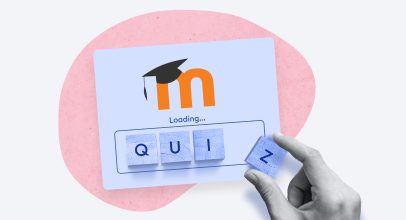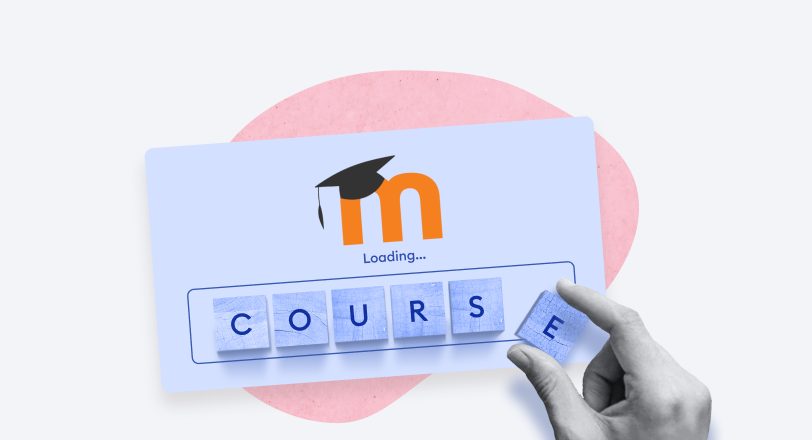Moodle eLearning: Launch Corporate Training for Free

Are you looking for a quick and cost-effective way to launch online corporate training? With a learning platform like Moodle, you can have your employee training up and running in no time for free.
Moodle is a fully decked learning management system (LMS) that enables you to create online courses, deliver them to trainees, and track their progress. It also allows you to send and receive assignments, build and administer quizzes with automated grading and reporting, and enable communication with and between students. And it won’t cost you a thing.
If this all sounds too good to be true, then keep reading! This article provides a step-by-step guide on how to use Moodle for eLearning.
Step 1. Download Moodle
First thing’s first. To get the latest version of Moodle, go to Downloads at moodle.org.
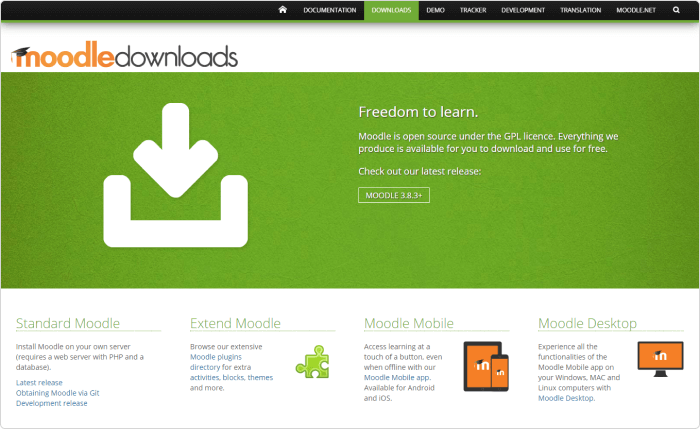
The provider allows you to install Moodle on your own Linux/Mac/Windows-based server (requires Apache, PHP 7.1+ and MariaDB or MySQL) from a ZIP package or via Git. And if these terms look like gibberish to you, make sure to get some help from a fellow computer geek that has at least some basic understanding of these server-side technologies.
Alternatively, If you’re on Mac/Windows, you can try one of Moodle’s complete installer packages that already contains the LMS and everything else needed to run it locally.
Step 2. Install
Once you’ve downloaded the installation option of your choice, you will need to go through a few initial steps to get your very own Moodle instance configured.
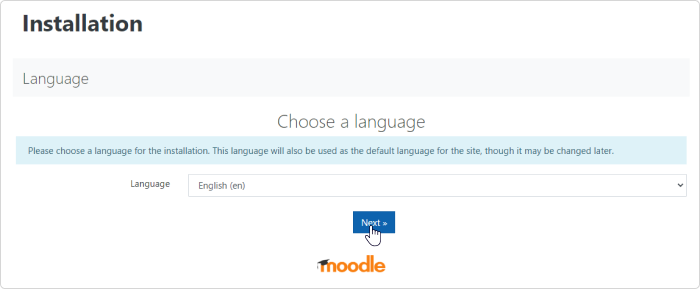
During this step, Moodle may point out certain problems with your server, like MySQL or Apache issues. Before you can continue with the installation, you’ll need to resolve at least the ones that are in red (placed at the top of the Server Checks list):
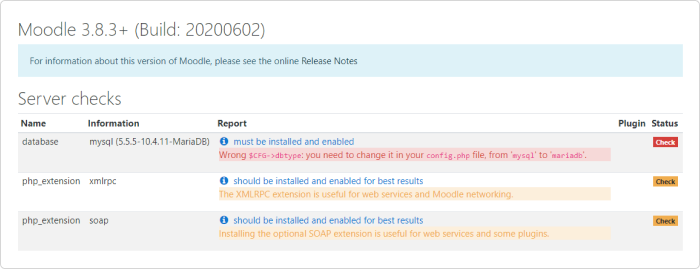
Note: If you’re not sure what you’re doing, stop and get some assistance from a savvier friend/colleague. Messing up even a single configuration file can cause your server to crash at startup.
After you can see that your server passes the basic checks, click on Continue at the bottom of the page and let the installation process begin. During the installation, Moodle will unpack its components and add the necessary entities required for it to work with your database. This process may take around 5-15 minutes. Once it’s done, you’ll need to scroll all the way down and click Continue:
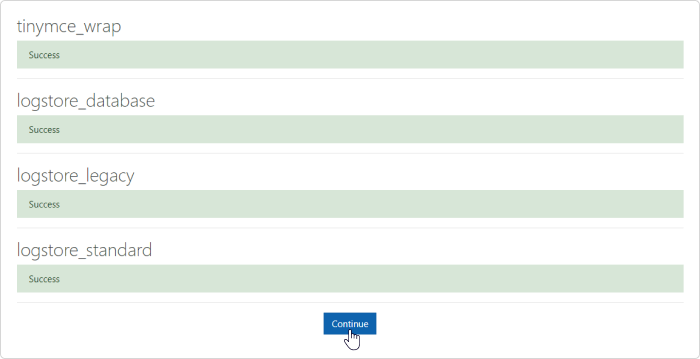
At this point, you should have landed on one of the two final screens of the installation process. On the first one, you will need to set up your admin account. Create a username and a password, enter your email address, and click on Update profile.
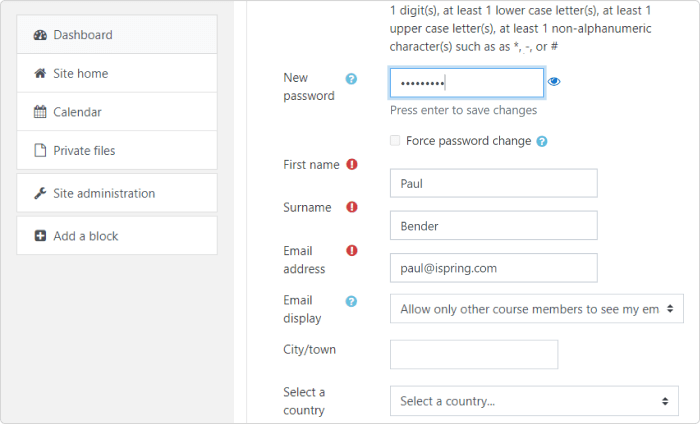
Then there will be the final screen, where you need to enter a name for your learning portal and, after that, it’s all done. When you see the page below, it means you finished installing your very own Moodle learning site:
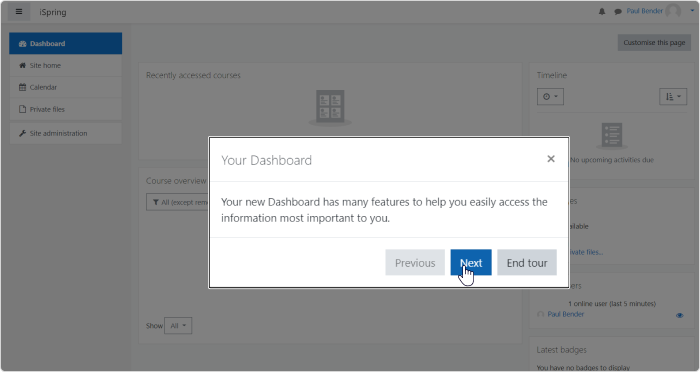
Step 3. Add a New User
Now that you’ve set up your Moodle portal, let’s look at how you can populate it with new users. In order to add a single new user, go to Site administration → Users → Accounts and click on Add a new user:
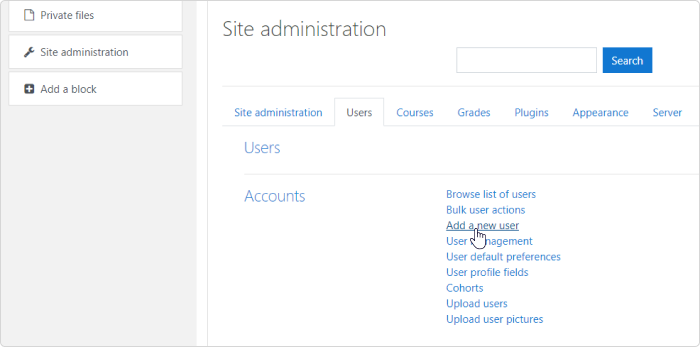
Enter a username (all lowercase, no spaces), first name, surname, and an email address. The rest of the information is optional and can be filled out by the user later on. You can either enter a password yourself or let Moodle generate it automatically and send it to the user via email.
Let’s create a password for the new user this time. Force password change means that the user will need to change their password the first time they log in:
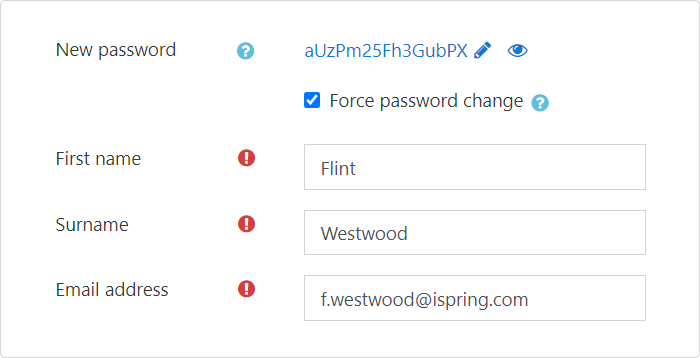
After you click on Create User at the bottom of the page, you’ll see it on your user list, where you can also add new users:
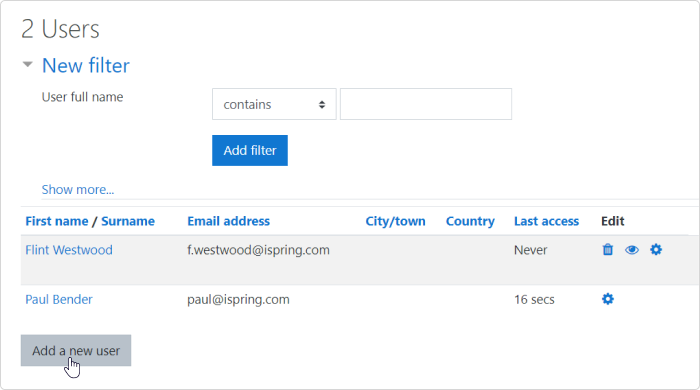
Now you can sign in as your newly created user. To do this, click on the user in the list and then choose Administration → Log in as → Continue. You will see that despite your still being recognized as the portal’s admin, the system states that you’re now logged in as the user you’ve just created and you’re seeing the portal as they would see it.
To go back to the admin account, you will need to log out via the menu at the top right (you do remember your admin credentials, right?).
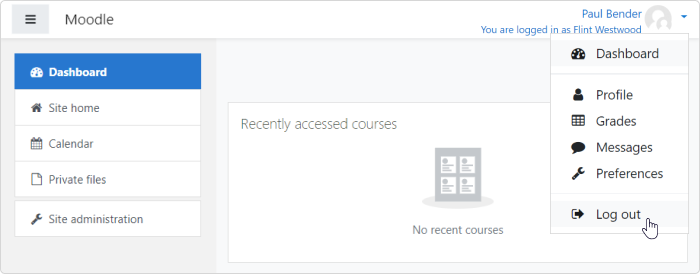
Step 4. Create an eLearning Course
Moodle has the features needed to build basic courses and quizzes. If this is your preferred direction, then the following guides do a great job getting you on track.
That being said, Moodle’s emphasis is on its learning management features. As such, many course creators use it as a dumping ground for training files, documents, and materials. But there’s more to course creation than simply sharing files. To make your courses truly engaging, you’ll need to include a moderate degree of interactivity. In Moodle, this interactivity is achieved to some degree by drag-and-drop exercises and the ability to include multimedia. And while there are in-built features to change the look and feel of your courses, many people find they have to fork out a small fortune to hire developers that can truly customize their training.
However, some modern authoring tools assume no special or technical knowledge. So you can save on the cost of professional developers by creating eLearning courses on your own. For example, with the iSpring Free authoring tool, you can easily convert PowerPoint presentations into eLearning that’s infused with a high degree of interactivity. And it doesn’t cost a thing! Simply publish your courses as SCORM packages and upload them to Moodle.
Building a course with iSpring Free
Creating a course with iSpring Free is as simple as following these steps:
- Download and install iSpring Free. Note that it runs on Windows, so you’ll need to have Microsoft Office to use it.
- To build a course from scratch, open iSpring Free and click on New Course.
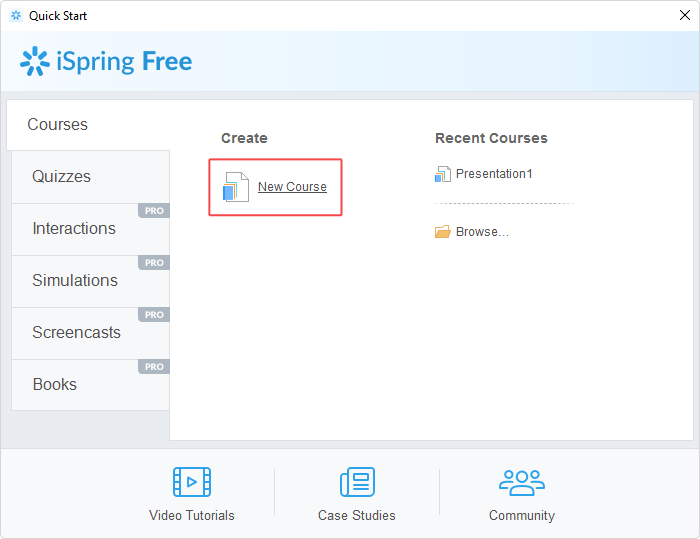 Note: When you open iSpring Free, it simply becomes another tab in the top ribbon in PowerPoint. This seamless blending keeps the interface intact and user friendly. Thus, because almost everyone has used PowerPoint at some point, iSpring Free eliminates any learning curves associated with navigating unfamiliar platforms.
Note: When you open iSpring Free, it simply becomes another tab in the top ribbon in PowerPoint. This seamless blending keeps the interface intact and user friendly. Thus, because almost everyone has used PowerPoint at some point, iSpring Free eliminates any learning curves associated with navigating unfamiliar platforms. - Populate your slides with text, images, hyperlinks, multimedia, and interactive graphics, as needed.
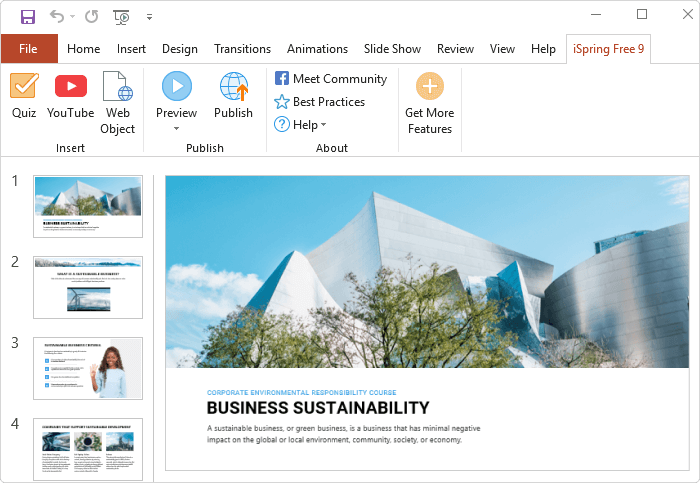
- You may also want to check learners’ knowledge after they learn the theory. For this purpose, iSpring Free enables you to create interactive multiple-choice, multiple response, and short answer quizzes in just minutes. Click on Quiz on the iSpring Free toolbar and choose Graded Quizzes.
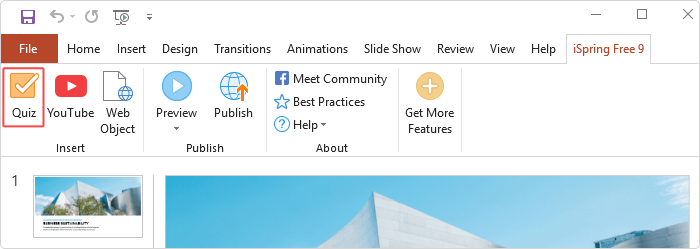
- Select the question type and populate the template with questions and answers.
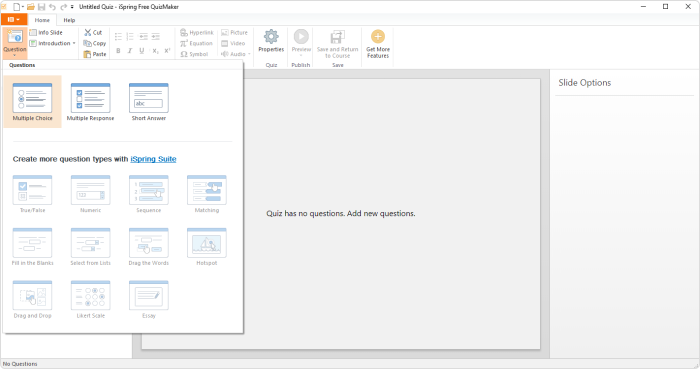
- If necessary, customize the feedback settings for the question and enable branching if you want your learners to move to different questions or slides depending on their answer.

- Once you’ve created your content and quiz slides and configured them with the necessary effects and/or parameters, you’re ready to publish your eLearning to Moodle LMS. Click on Publish on the iSpring Free toolbar. In the opened window, choose the LMS tab → SCORM 1.2.
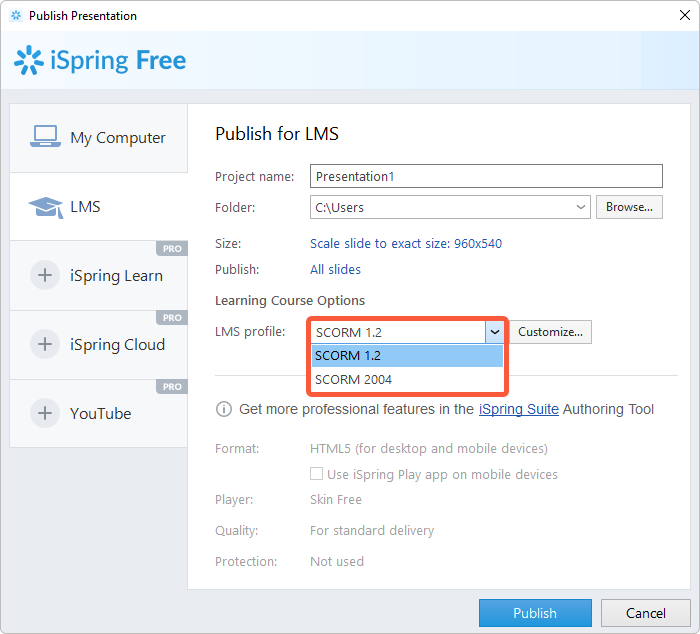
- Click on Customize to configure your course information and tracking settings. The latter is especially important for tracking learners’ quiz results. Once you’re in, you can customize the Progress and Completion section.
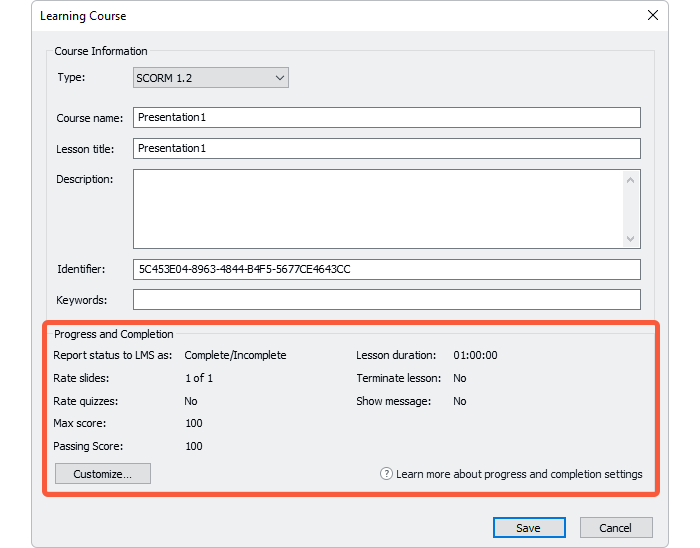
iSpring Free provides everything you need to create powerful, interactive, and Moodle-compliant eLearning. But if you’re interested in more advanced features, such as audio/video narration, conversation simulations, and extra types of quiz questions, then you can always upgrade to iSpring Suite.
Once you’ve published your learning module as a Moodle-friendly SCORM package, you’ll need to upload it to the platform. To do this, create a new course in Moodle using Site Administration → Courses → Add a new course and fill out the required info.
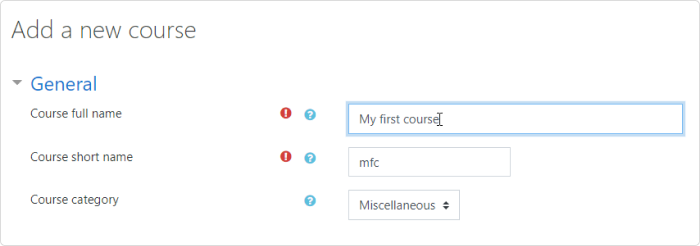
Then click on Save & Display at the bottom of the page. Click on your course’s short name on the left and select Add an activity or resource under Topic 1:
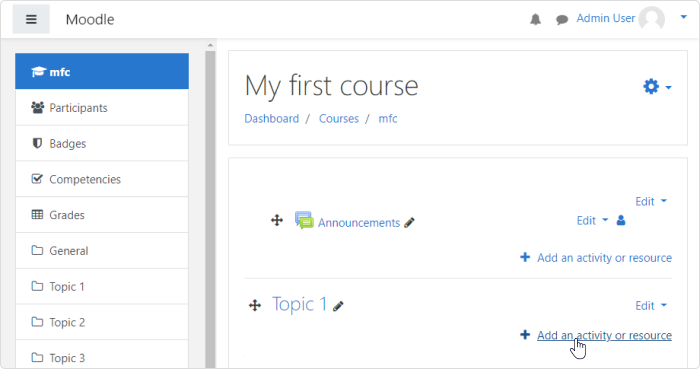
Select SCORM Package from the pop-up menu and click Add:
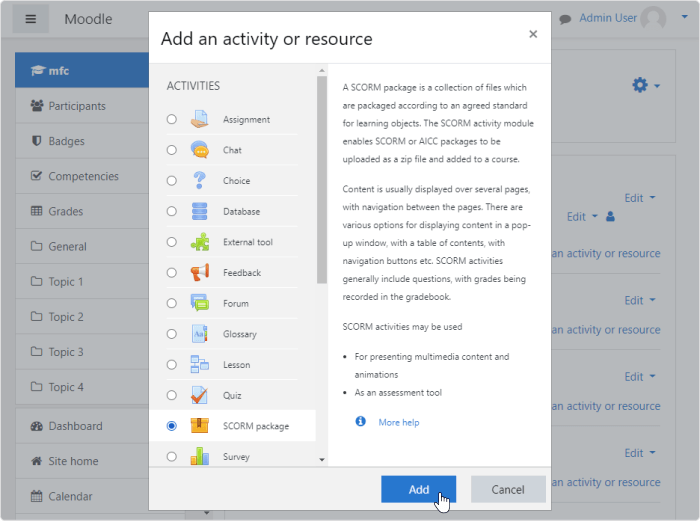
Enter a name for your module and upload the iSpring-generated ZIP file in the Package section:
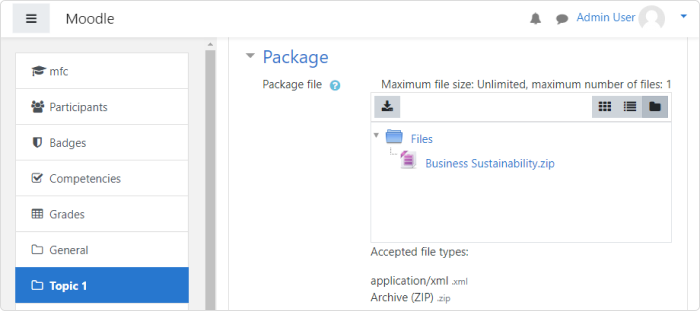
Then scroll to the bottom and click on Save and return to course to go back to the course structure, or click Save and display → Enter to preview your newly uploaded module in Moodle:
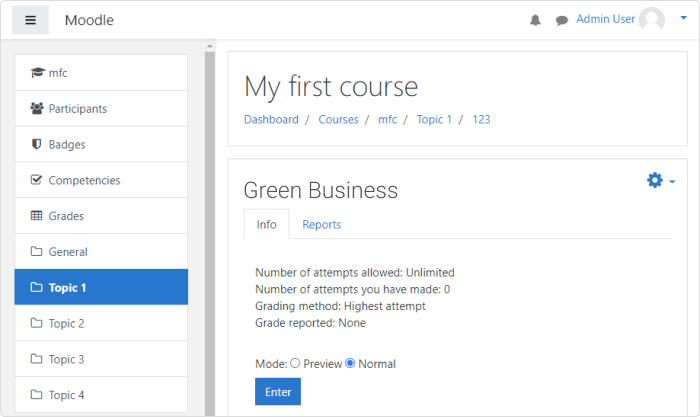
And, lo and behold, you have just uploaded your learning module to your learning portal:
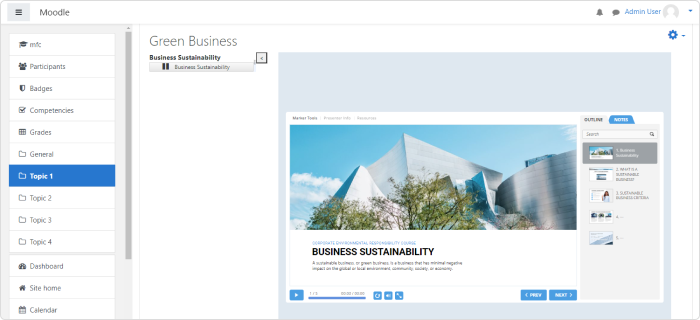
Our next task will be to assign the course to the user we created in step 3.
Step 5. Enroll Learner in the Course
Go to Participants in the navigation panel on the left and click on Enroll users:
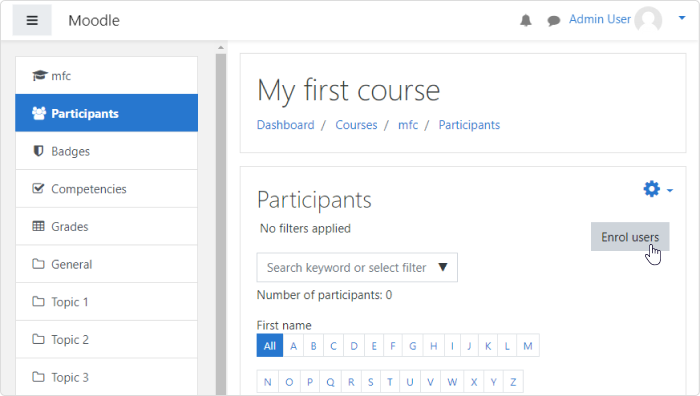
Start entering the name/email of the learner you’re looking for in the Search field and select them:
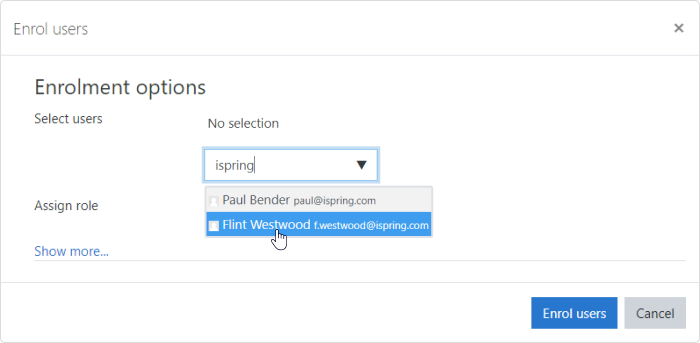
After selecting the user(s), you can set their role in this course. It can be teacher, manager, student, or any other custom user role that you create. To learn more about each of the standard user roles in Moodle, check out this article.
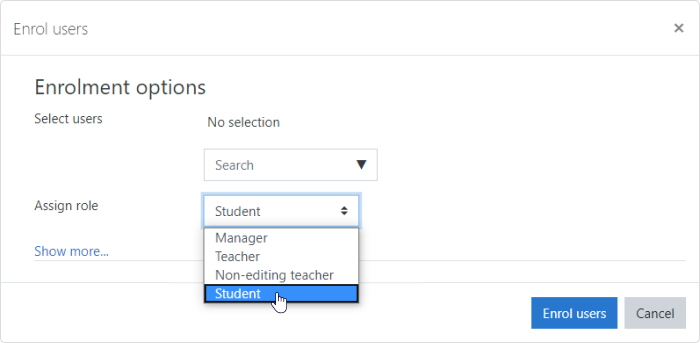
Click on Enroll users to finish the enrollment process and you should see a record of it on your screen:
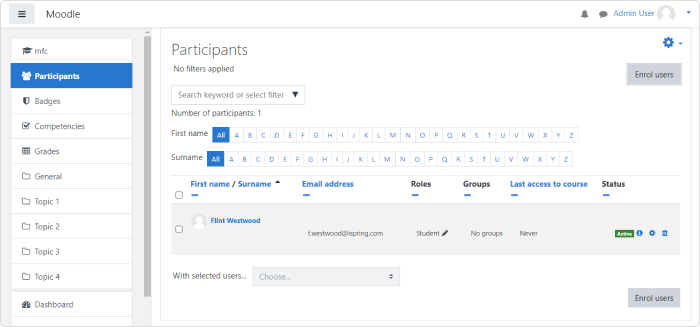
Step 6. Track Learner Progress
This is the step where the publish and quiz reporting settings we configured, prior to publishing, really come into play. When you upload an iSpring Free course to Moodle, it lets you track learner progress and activity.
Let’s sign in as the learner and attempt to take the SCORM module that we uploaded. Go to Site administration → Users → Browse list of users and click on the person of interest. Now click on Log in as in the Administration section and then press Continue.
You should see the course you added in step 4 on your Dashboard; click on it:
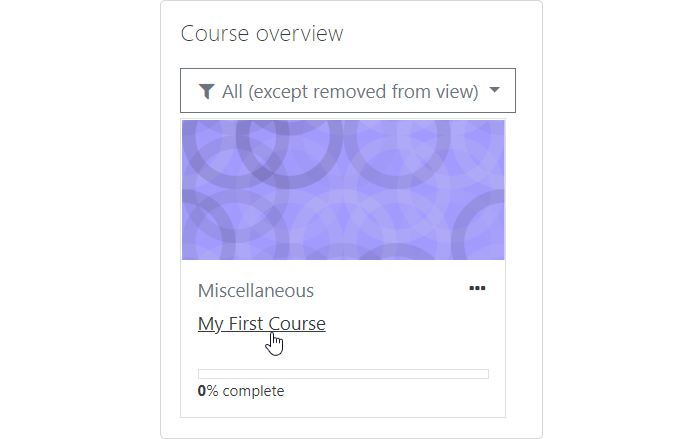
Then click on the iSpring Free module that you added to the course and enter the Normal view mode. If you select the Preview mode, your progress on the module will not be recorded!
After taking the course, click on Exit Activity at the top right. This is important for getting your results recorded:

Switch back to the admin account. Click on Site Home on the left and select your course:

Click Grades on the left and you will see the grade you got on the learner account for the SCORM module you uploaded:

There are hundreds of adjustable parameters and a vast number of customization options in this part of Moodle, but the basics stay the same no matter what – after a learner takes a course, the admin sees the results in the Gradebook.
Final Thoughts
From the outside looking in, eLearning and course creation might seem like a convoluted, daunting, and, worst of all, expensive task. The trick is being resourceful and knowing what eLearning software exists that’s completely free and fully functional.
Despite being one of the most popular and powerful LMSs on the market, Moodle’s open-source platform fits the bill. That being said, where Moodle falls short is its course creation capabilities. That’s where iSpring Free comes in. Take your courses up a notch by infusing interactivity and multimedia in each of your content slides. And because iSpring Free integrates with Moodle perfectly, you’ll be able to keep track of trainee progress with ease.
Download iSpring Free, a cost- and commitment-free way to create powerful and professional eLearning for corporate training!



